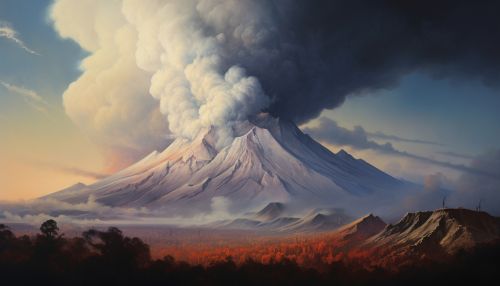Atmospheric Chemistry of Volcanic Eruptions
Introduction
Atmospheric chemistry is a branch of atmospheric science in which the chemistry of the Earth's atmosphere and that of other planets is studied. It is a multidisciplinary field of research and draws on environmental chemistry, physics, meteorology, computer modeling, oceanography, geology and volcanology and other disciplines. One of the key aspects of atmospheric chemistry is the study of volcanic eruptions and their impact on the atmosphere.
Volcanic Eruptions and Atmospheric Chemistry
Volcanic eruptions are natural disasters that have a significant impact on the Earth's atmosphere. The gases and particles released during an eruption can alter the chemical composition of the atmosphere, influence the climate, and affect air quality. The primary gases emitted during a volcanic eruption are water vapor (H2O), carbon dioxide (CO2), and sulfur dioxide (SO2). Other gases like hydrogen sulfide (H2S), hydrogen chloride (HCl), hydrogen fluoride (HF), and various trace metals can also be released.


Impact on Atmospheric Composition
The gases and particles released during a volcanic eruption can significantly alter the atmospheric composition. The most abundant gas, water vapor, contributes to the formation of clouds and can lead to increased precipitation in the vicinity of the volcano. Carbon dioxide, a well-known greenhouse gas, can contribute to global warming. However, the amount of CO2 released by volcanoes is small compared to human activities.
Sulfur dioxide is converted in the atmosphere to sulfuric acid, which can form aerosols. These aerosols reflect sunlight back into space, cooling the Earth's surface. This cooling effect can partially offset the warming effect of the CO2. However, the aerosols also scatter sunlight, leading to colorful sunsets and sunrises.
Impact on Climate
Volcanic eruptions can have a significant impact on the Earth's climate. The aerosols produced by volcanic eruptions can cause a cooling effect on the Earth's surface, known as volcanic winter. This effect can last for several years after a major eruption. The most famous example of a volcanic winter occurred after the eruption of Mount Tambora in 1815, which led to the "Year Without a Summer" in 1816.
On the other hand, the greenhouse gases released by volcanic eruptions, particularly carbon dioxide, can contribute to global warming. However, the amount of CO2 released by volcanoes is small compared to human activities.
Impact on Air Quality
Volcanic eruptions can also have a significant impact on air quality. The gases and particles released during an eruption can cause air pollution, leading to health problems for people living near the volcano. Sulfur dioxide, in particular, can cause respiratory problems and irritate the eyes. The ash particles can also be harmful if inhaled and can cause damage to buildings and infrastructure.
Volcanic Gases and Atmospheric Chemistry
The gases released during a volcanic eruption undergo various chemical reactions in the atmosphere. These reactions can lead to the formation of new compounds and particles, which can have a significant impact on the atmosphere and climate.
Conclusion
In conclusion, volcanic eruptions play a significant role in atmospheric chemistry. The gases and particles released during an eruption can alter the chemical composition of the atmosphere, influence the climate, and affect air quality. Understanding the impact of volcanic eruptions on atmospheric chemistry is crucial for predicting and mitigating the effects of future eruptions.
